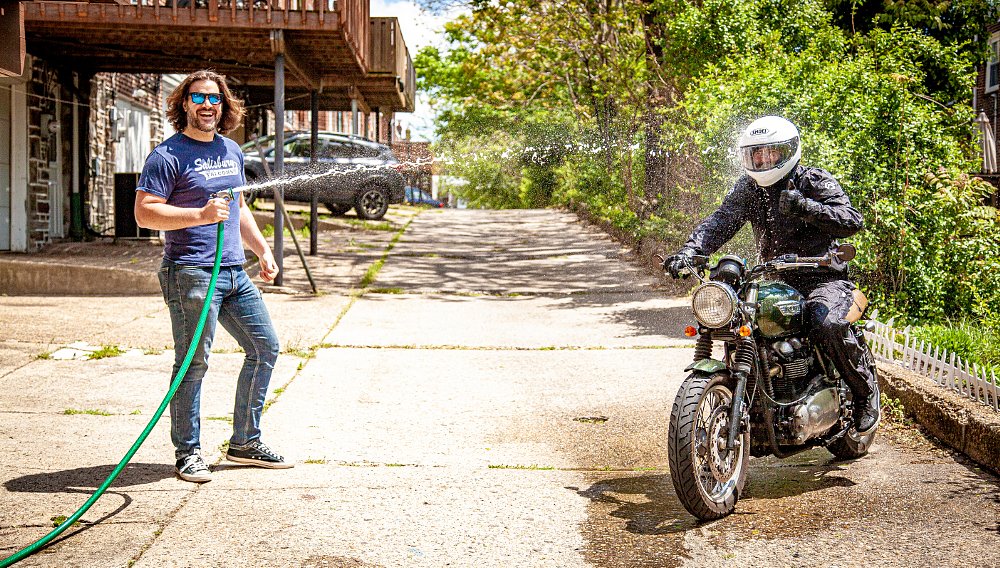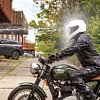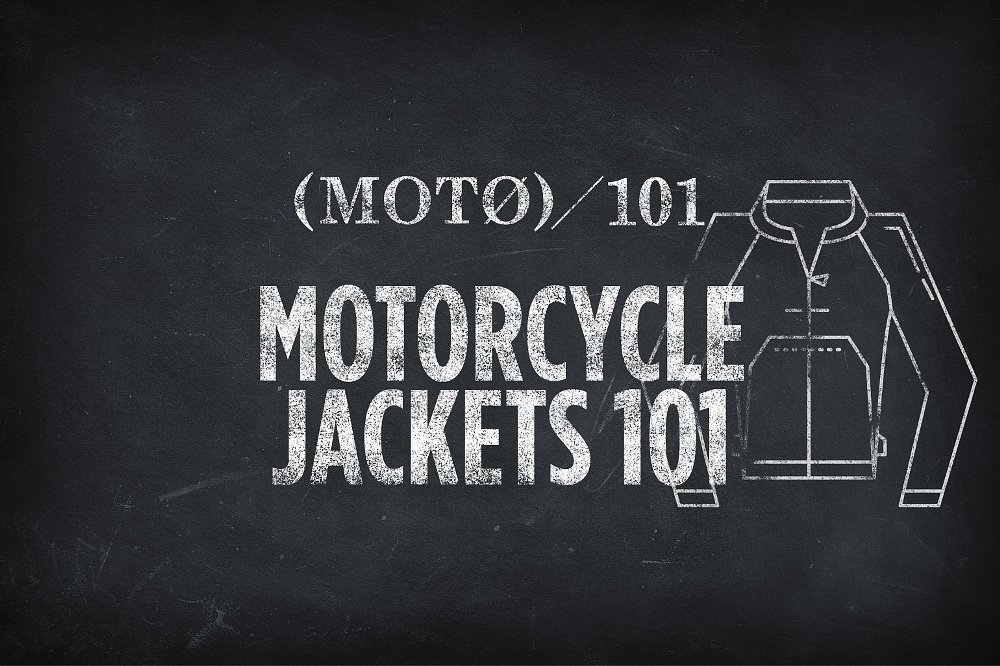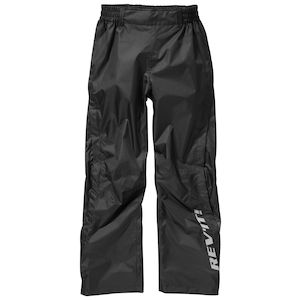If you ride motorcycles much, you’re bound to get caught in the rain at some point. While most of us feel that riding in the rain is not much fun, it's a lot better if you’re prepared for it. So let's take a look at a few options motorcyclists have for staying dry and consider the pros and cons of each.
I'm going to talk mostly about jackets, but some of the same basic features and constructions also apply to waterproof pants, boots and gloves.
Packable waterproof layers, like a rain suit
First up, packable waterproof layers. This is what I’ve used and continue to use the most. A rain jacket and pants generally fold up to a small size and therefore are easy to toss in a backpack, saddlebags, etc. They’re very straightforward and designed to be worn over your existing gear. When it starts to rain, simply pull over, wrangle on those layers, and you’re back in the game.
One of my favorite packable waterproof jacket and pants combos is the REV’IT! Cyclone 2 H20 Rain Jacket and REV’IT! Sphinx H20 Pants. I’m also a fan of Frogg Toggs! They’re tough to beat for the price.
Some riders I know prefer the one-piece rain suits but for me, personally, they feel a bit more cumbersome to throw on and off. It’s all personal preference.
The biggest problem I’ve found with packable layers is that you have to stop and put on that waterproof layer. If the rain starts without warning, you’ll typically get a bit wet while you're finding a safe location to pull off of the road. With that said, you still have a lot of versatility by being able to take these layers off and throw them back on as needed. If you want to eliminate the need to stop and add an extra layer, then waterproof gear with a laminated exterior is the next option to consider.
Laminated exterior liners
A laminated exterior puts the waterproof layer or membrane on the outside of the gear. In inclement weather, water just rolls right off so you stay dry and the jacket doesn't get heavy from soaking up the rain. Another benefit of having the waterproof layer on the exterior of your jacket is that you’ll be able to capitalize on the ventilation. The vents allow air to flow through the jacket directly to the body and help keep riders comfortable during warmer temperatures when it isn't raining.
Ventilation is always welcome on waterproof jackets because you not only want to keep the rain out, but also let the moisture your body creates escape from your waterproof jacket. Even on a cold winter day, I’ve still been able to overheat a bit, mainly when I’m riding in the city and creeping from one light to the next, and I'm dressed for staying warm at highway speeds.
The solution to this problem is to have a waterproof, breathable layer, and in that area there’s one name that I’m sure most of us know very well: Gore-Tex.
Gore-Tex and other breathable liners
Gore-Tex is known for offering some of the most breathable waterproof gear on the market. I’m not going to get too deep into the techy details, but know it’s capable of incredibly high levels of waterproofness combined with high levels of breathability thanks to billions of microscopic pores that let water vapor out and prevent liquid water from entering.
Additionally, if you’re not satisfied with the waterproofness, windproofness or breathability of your Gore-Tex product, they will repair it, replace it or refund your purchase price.
You generally pay a little more for waterproof gear with a genuine Gore-Tex lining, but if you’re riding in a wide range of climates, traveling across the country, or really just doing any long-distance touring or adventure riding, it’s probably worth the extra coin to pick up some Gore-Tex gear.
Major gear manufacturers like REV’IT!, Alpinestars and Dainese have their own proprietary waterproof, breathable layers that work on the same principle as Gore-Tex. For most uses, I think those waterproofing solutions do a great job. For me personally, I have about a 25-minute commute to work, I zip around the city a lot, and most of my weekends are spent out on the trails. I do a few trips a year that involve a few days on the bike at a time, but for most of the riding I do, I simply don’t feel that I need to spend more for Gore-Tex gear.
I guess while I'm talking about what I like, I might as well follow up with an option I don't like, right? That brings me to Z-liners, which have their pros and cons, but are my least favorite waterproof option, personally.
Z-liners
A Z-liner is a permanent, waterproof layer that sits between the exterior of the jacket and the rider. The Z-liner will ensure the rider doesn’t get wet but the exterior of the jacket will actually get wet and take on water. The drawback is the jacket can get heavy feeling and it may also provide less insulating effect in cold conditions.
There's also a drawback on warm days. You’ll often find vents that you can open and close on gear that utilizes a Z-Liner, but those vents flow air to the liner, not directly to the rider's skin. The air flow helps evaporate moisture that can build up — so they say. In my opinion, it’s kind of pointless to have vents on a jacket if the rider does not get to truly experience the feeling of the breeze blowing through said vents.
Another solution that addresses those drawbacks is a removable waterproof liner.
Removable liners
Some jackets use waterproof liners that go inside the exterior jacket and attach with zippers and/or snaps, sometimes referred to as a "drop liner." Lately, some manufacturers have also offered removable waterproof liners that can be worn both under and over the jacket. I’ve been riding around in the REAX Apex Pro Mesh Jacketfor a bit and I think more manufacturers should implement this feature into their gear.
Why choose a removable liner instead of just wearing a jacket that has a waterproof membrane on the outside or a Z-liner? The removable liner gives you more flexibility. If it’s 90 degrees outside with a chance of thunderstorms, I want a jacket that feels lightweight and provides maximum airflow so I can stay comfortable. If the weather turns wet, I can put in the liner and stay dry. A drop liner on a mesh jacket also helps by blocking the wind on chilly morning commutes into the office when you know the afternoon ride home will be hot. With the removable layer, one jacket can keep you prepared for a wider variety of conditions.
I’ve found two downsides to using a jacket with a removable waterproof liner. First, much like the Z-liner that was mentioned before, the exterior of the jacket will take on water. The rider will remain dry but you’ll have to hang up your jacket once you get to your destination to let it dry. Second, similar to packable waterproof layers, you’ve got to pull over and wrangle it into the jacket if it’s not already zipped in. It can take a few minutes to get the zippers and snaps attached and the liner doesn't help much if you get it installed after you're already soaked, standing on the side of the road.

Conclusion: Choosing waterproof gear that's right for you
Maybe you are a fair weather rider and not planning to ride in the rain, ever. But, at the very least, I would recommend picking up a rain suit as packable layers just to have handy, in case of the unexpected. The weather forecasters don’t always get it right.
For year-round, all-weather and long-distance riders, waterproof gear is a must. Consider the pros and cons and prices of the options above and choose the one that suits your needs. If you still have questions, ask a RevZilla Gear Geek.























